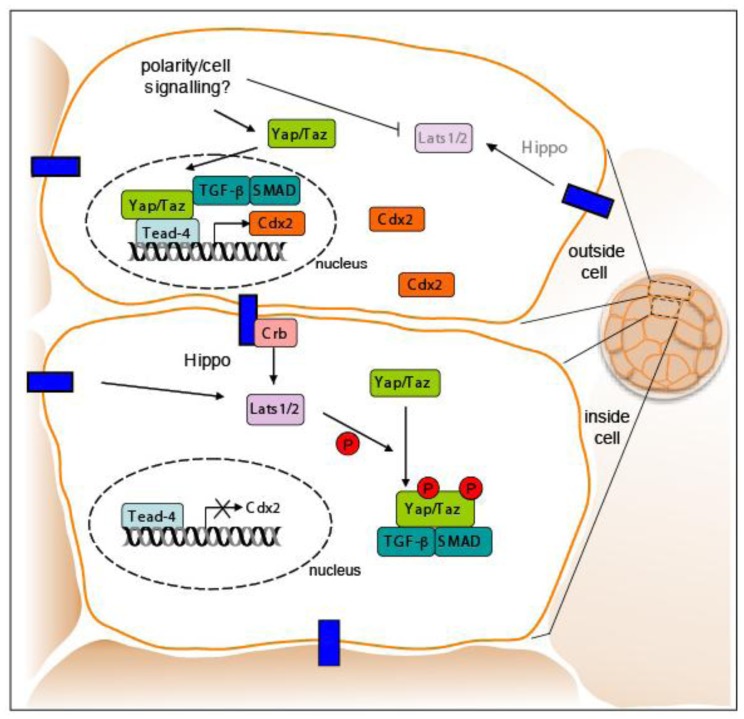Figure 7.
A model of cell position (inside vs. outside) and cell fate specification in the early embryo involves members of the Hippo pathway. Several components of the Hippo pathway are implicated in TE versus ICM fate. The Hippo pathway converts cell density information into cell growth control and gene activity. In the low-density or “outside” cells, the transcriptional co-factor, Yap/Taz, are trans-located into the nucleus by cellular signals. This nuclear Yap/Taz binds Tead4 and transcriptionally activates TE genes, such as Cdx2, to specify TE fate. The Crumbs (Crb) polarity complex interacts with Yap/Taz promoting nuclear accumulation of TGF-B and SMAD signals, linking TFG-B activity in the Hippo pathway. In high-density or “inside cells”, Yap is phosphorylated by Hippo kinases, such as Lats 1/2, excluding Yap/Taz from the nucleus. TGF-B/SMADs are also retained in the cytoplasm. As a consequence, Tead4 remains inactive, keeping TE-specific genes silent. These inside cells are destined to become ICM.

